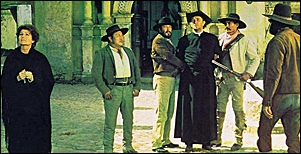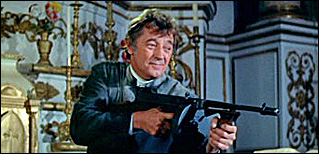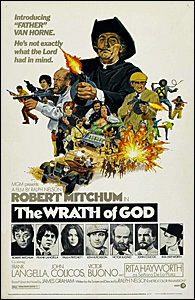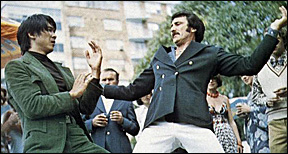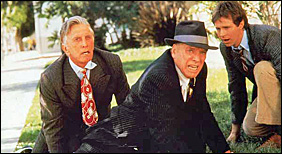FIRST YOU READ, THEN YOU WRITE
by Francis M. Nevins
Two months ago I devoted my column to Stanislas-André Steeman, a European crime novelist who was almost never published in this country and unsurprisingly has long been forgotten here. This month’s topic is an English writer who was once published regularly over here but has been just as completely forgotten.

Christopher Bush (1888-1973) was one of the stalwarts of the British detective novel’s golden age, but almost nothing is known of his life. According to the Penguin paperback edition of one of the books I’ll be talking about shortly, he was born of Quaker ancestry in an East Anglian village and served in both World Wars. At the time of the Penguin reprint in the early 1950s he was living in Suffolk and pursuing his hobbies of bridge, crossword puzzles and what he called “post-middle-aged self.â€
Back when I was a mystery fiction newbie I read at least a dozen of his books. After a few years I concluded that there wasn’t much of interest in what he wrote after World War II, when his series character, a moneyed bloke named Ludovic Travers, opened a detective agency and began narrating his exploits in soporific first-person prose.
But the pre-war Travers novels I found much better written and characterized and much more engaging. Bush’s specialty was the perfect alibi, with which in most of his novels several suspects happen to be supplied. You won’t lose money if you bet that the one with the apparently most impregnable alibi is the murderer.

The earliest of the three Bushes I recently decided to tackle is THE CASE OF THE CHINESE GONG (1935). The Great Depression, or as Bush calls it the slump, is very much in evidence and has laid low three of the four principal characters, the father of two of whom was the brother of the other pair’s mother. The failed toy manufacturer, his brother the painter on his uppers and their cousin the struggling schoolmaster are in desperate financial straits and stay precariously afloat only thanks to the generosity of the cousin’s brother, a gassed veteran of World War I, who is himself near broke thanks to bailing out his brother and cousins.
The only hope of the four is their uncle, a wealthy and vindictive old tyrant who reigns in a stately home near the town of Seaborough. He has refused to help any of them, but when he dies they’ll each inherit enough to make them whole again. All four come down to celebrate (if that’s the word) the old man’s 74th birthday, at which the festivities (if that’s the word) are marred when he’s shot to death in his drawing room, in the presence of his solicitor and three of the four next of kin (the painter being in a summerhouse about twenty feet away), while across the room the resident butler is loudly ringing the titular gong. Happily Travers is in the area, visiting Major Tempest, chief constable of the county, and as usual takes a hand in the investigation.
I wouldn’t call this book a model of fair play with the reader, and there are a number of gaffes. Would you believe that three independent plots to kill the old man are going on at the same time? (At one point Travers ventures the suggestion that everyone did the crime together, showing the influence of Christie’s MURDER ON THE ORIENT EXPRESS just a year after its publication.)
The sinister letter Uncle Hubert received early on, supposedly from the husband of his estranged sister, is never explained, and the diagram that precedes the book fails to show the side door to the summerhouse, which figures heavily in the plot. Even back in 1935 I should think that simple police routine would have uncovered the scorch marks in the screen that Travers finds at the climax, proving where the fatal shot was fired from.
But it’s a readable enough effort, and studded with the kind of lines one never finds in postwar Bush. Here for example is a description of the Toad Hall in which Uncle Hubert lives. “It was a biggish Victorian house, with gardens chock-full of second-rate rubbish—monkey-puzzle trees, laurel shrubberies, mossy croquet-lawn and miniature temple-cum-pagoda summer-house—as in the year its first owner had had them laid out.†GONG leaves much to be desired but showed me that I still have an affection for Golden Age puzzles.
THE CASE OF THE MISSING MINUTES (1937; U.S. title EIGHT O’CLOCK ALIBI) takes place in the same area but it’s far superior to CHINESE GONG and indeed may be Bush’s finest novel. Travers is approached by his sister after a former maid tells her of strange doings and horrible night shrieks in the house called Highways where she and her husband are the servants.
Soon after Travers makes an investigatory visit to the village of Seabrake — which happens to be not far from Seaborough where CHINESE GONG took place — he finds stabbed to death the bizarre old man who was living at the house with his 10-year-old granddaughter. Among the prime suspects are the child’s tutor and a classical pianist who happens to be in Seabrake on vacation.
As usual in Bush novels, both men and some other characters as well have seemingly airtight alibis. At the head of the police team who come to the scene are the trio we met in CHINESE GONG — chief constable Major Tempest and his subordinates Inspector Carry and Sergeant Polegate — and all three are delighted to have Travers’ help in sorting things out.
I can discuss this novel without revealing the murderer but not without giving away a central part of the plot. At about the two-thirds mark Travers connects the dots between a large number of subtle indications, concludes that the dead man had been a sadistic child-abuser obsessed with inflicting physical and psychological torture on his half-Jewish granddaughter with the aim of driving her insane, and refuses to give the police any more help finding the murderer.
In Golden Age British detective novels this was a radical story element indeed, and Bush exerts all of his skill persuading us that if anyone ever deserved killing it was the old monster whose murder Travers is investigating. Readers who want to know whether or not the killer was caught will have to track down their own copy of the book. Mine is not for sale.

CHINESE GONG and MISSING MINUTES are unusual in the Bush canon in that they take place outside the London area and therefore are without Travers’ usual Scotland Yard counterpart Superintendent George Wharton, who sports “a huge weeping-willow of a moustache†and, to me anyway, looks and sounds something like the late great Leo McKern when he played Rumpole of the Bailey.
In THE CASE OF THE TUDOR QUEEN (1938) the setting is close to London and Wharton is front and center as usual. Passing through the village of Arneford, he and Travers encounter a frightened maid and wind up in a house in the London suburb of Westmead where they encounter two dead people: an actress who had recently scored a success playing Mary Tudor and the horserace-loving old rip who served as a sort of factotum to her.
Both have died of poison, and as far as anyone can prove it was a case of double suicide, unless the man killed the woman and then, a day or so later, poisoned himself. Various parties are interviewed — the owner of the theater where the Mary Tudor play ran, the playwright, the actors who played the male leads opposite the dead woman — and eventually Travers comes up with a theory of how the most elaborate alibi might have been faked.
At the fadeout the police are preparing to arrest the person Travers’s analysis points to. But since his reconstruction is speculative to say the least, and since there’s no proof even that the two deaths weren’t suicides, I would hate to have been the prosecuting attorney trying to get a conviction on this state of the evidence.
Well, I’ve beaten around enough Bushes for one column. I do own several more pre-WWII Ludovic Travers novels that predate the three I’ve talked about here. Perhaps someday I’ll dig them out and report on them. If I hold out that long.
Editorial Acknowledgement: The photo of Christopher Bush at the top of this post was borrowed from J. F. Norris’s “Pretty Sinister” blog. Thanks, John!
